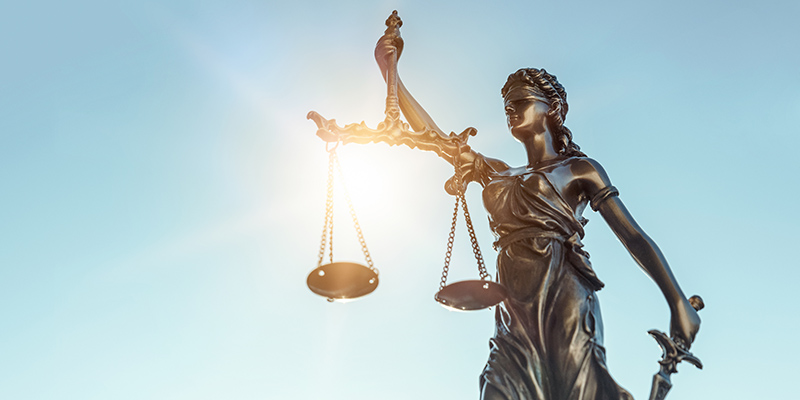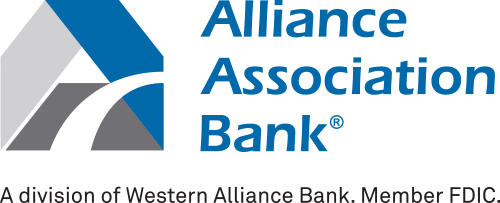Robert’s Rules Of Order Officers: What Do They Do?

Members of various organizations, including HOAs, should understand the responsibilities of officers in Robert's Rules of Order. These duties and obligations specify the roles and duties that leaders must fulfill in adherence to the correct procedures.
Browse By Category
Sign up for Our Newsletter
Members of various organizations, including HOAs, should understand the responsibilities of officers in Robert’s Rules of Order. These duties and obligations specify the roles and duties that leaders must fulfill in adherence to the correct procedures.
Robert’s Rules of Order Officers: Duties and Responsibilities
In organizations, officers are usually selected from among their members. Members who take on officer roles maintain their rights, such as making motions, participating in debates, and voting. However, a president must uphold impartiality, leading to regulations dictating when they can propose motions, engage in debates, and cast votes.
Those elected or appointed bear the responsibility of documenting their duties and passing them on to successors. Organizations with a permanent facility should store essential records there, rather than with officers. The facility ought to provide a workspace for the secretary and treasurer. In smaller organizations where officers often keep records in their homes, plans should be in place for their return if an officer loses re-election, resigns, or dies.
When choosing officers according to Robert’s Rules of Order, members should take into account their reliability. Those elected must carefully evaluate the responsibilities of their roles. If an officer realizes they can’t meet the demands, they should seek assistance or resign. Resignation should involve returning entrusted documents in person or through certified mail with a return receipt.
For Robert’s Rules of Order officer positions, organizations need a minimum of two officers:
- A president who presides over meetings
- A secretary who records meeting transactions
However, it’s crucial to review the organization’s governing documents, as specific officer requirements may vary. For HOAs, the bylaws will normally reflect these requirements.
What Is the Role of the President?
The duties and responsibilities of the president are contingent upon the organization’s bylaws. In a general sense, the president takes the lead by establishing goals, executing administrative tasks specified in the bylaws, and overseeing meetings.
Organization structure aside, the president’s authority is confined to those outlined in the bylaws. Some elected presidents might think they have unlimited power, potentially creating a perception of dictatorship among members.
The president predominantly serves as the presiding officer in meetings. The primary duties of the presiding officer involve upholding order, ensuring fairness and impartiality, and protecting the rights of all members during meetings.
Let’s take a closer look at Robert’s Rules of Order officer responsibilities when it comes to the presiding officer.
Upholding Order
To maintain order in a meeting, the president should be familiar with the organization’s bylaws, rules, parliamentary procedures, and delegated authority. The president’s specific tasks include:
- Cooperating with the secretary to plan the agenda, tackling any unfinished or new business;
- Anticipating potential issues during controversial discussions by seeking help from a parliamentarian beforehand;
- Confirming with standing committee members before the meeting to verify if they have reports to present;
- Arriving at the meeting with necessary documents like bylaws, standing rules, and parliamentary authority;
- Starting the meeting on time, confirming the presence of a quorum without formal announcement;
- Sequencing and organizing business correctly, addressing motions appropriately;
- Requesting members to state their purpose when rising, ensuring adherence to correct procedural steps;
- Facilitating fair and timely debate on motions, ensuring representation of each side during contentious issues;
- Conducting votes on motions and delivering results, dictating responsibilities upon the adoption of a motion;
- Ruling on procedural deviations, entertaining appeals, and responding to member inquiries about business or parliamentary procedures; and,
- Ending the meeting through an assembly vote, especially in situations out of control or when there is a health and safety risk.
Ensuring Fairness and Impartiality
The fundamental principle for all presiding officers is to represent every member, promoting fairness and impartiality during meetings. This responsibility means ensuring all relevant facts are presented during debates so the assembly can make an informed decision.
The president adheres to specific rules to uphold fairness:
- In business meetings, the president refrains from making motions or participating in debates.
- The president may engage in debate by temporarily leaving the chair, letting another officer preside until the motion is resolved, and must abstain from presiding during this period.
- The president steps down if there is a direct personal or financial interest in a motion or when censured. However, they can remain in the chair during nominations or elections involving their candidacy.
- The president only votes in tie-breaking situations, when their vote would create a tie, or in votes taken by ballot.
- The president provides information, corrects misinformation, and assists members with parliamentary procedures, maintaining an obligation to aid in phrasing motions even when in opposition.
- When assigning the floor, the president sits down if possible; otherwise, they stand back from the lectern.
- In enforcing debate rules and decorum, the president alternates between presenting pros and cons in controversial situations.
- The president refers to themselves in the third person when addressing members, keeping their tone impartial.
Protecting the Rights of All Members
A competent president protects members’ rights by adhering to and enforcing the organization’s bylaws and rules. This involves ruling out of order any motions that conflict with these documents or violate government regulations.
Specific responsibilities aimed at protecting members’ rights include:
- Preventing frivolous or delaying motions and ensuring commitment to the democratic process;
- Recognizing dilatory practices, such as unnecessary divisions, repetitive adjournment motions, impractical proposals, or baseless points of order;
- Managing dilatory practices with composure and courtesy, either by refraining from acknowledging members or deeming motions out of order, but solely in evident cases of obstruction;
- Familiarity with protocols for dealing with disorderly and disruptive members, which includes giving a warning to the member, documenting objectionable behavior, and, as a final option, opting for charges;
- In cases where charges are preferred, permitting the assembly to suggest a penalty through a debatable motion, requiring a majority vote unless it pertains to membership rights, in which case a two-thirds vote is necessary; and,
- Seeking to resolve issues without resorting to formal procedures, such as announcing a recess to address the concern directly with the member.
What Is the Role of the Vice President?
The vice president, often known as the “president in training,” holds specific responsibilities within parliamentary procedures. They lead meetings when the president is absent or steps down to participate in debate or faces censure. In the event of a vacancy in the president’s role, the vice president assumes the responsibilities, following a predetermined order of succession outlined in the bylaws, particularly when multiple vice presidents are involved.
While presiding, members formally address the vice president as “Mr. President” or “Madam President.” If both the president and vice president are present, the vice president is referred to as “Mr. Vice President” or “Madam Vice President.” In situations of uncertainty, using “Mr.” or “Madam Chairman” is also considered appropriate.
However, if the bylaws explicitly state that the president appoints all committees, the vice president, while presiding, lacks the authority to appoint a special committee unless the bylaws permit the suspension of this rule.
What Is the Role of the Secretary?
The secretary is equally important because of tasks like record-keeping, agenda preparation, handling correspondence, sending meeting notices, taking minutes, and other administrative jobs assigned by the organization.
The secretary’s main jobs are:
- Keeping records well-organized, which includes committee reports and an up-to-date member list
- Informing members about their election or committee assignment and providing the necessary documents
- Notifying members about their election or appointment as delegates for conventions and providing the required credentials
- Putting signatures on minutes and certified acts of the organization unless the bylaws state otherwise
- Protecting official documents, such as bylaws, rules, standing rules, correspondence, and minutes, and updating them through the amendment process
- Sending meeting notices to members
- Documenting minutes for all business and board meetings, handling correspondence, and preparing meeting agendas unless the president suggests otherwise
- Bringing essential supplies to each meeting, which includes the minutes book, bylaws, rules, membership list, committee information, agenda, records, ballots, and other necessary items
An organization’s bylaws or standing rules should reflect any duties outside of Robert’s Rules of Order officer roles.
Recording, Approving, and Amending the Meeting Minutes
Minutes should emphasize the actions taken rather than verbal exchanges or personal opinions. Approval of the minutes rests with the assembly. Any corrections can be addressed through a motion to amend or a general consent vote. Typically, the presiding officer and secretary review the minutes for accuracy. Published minutes should include a speaker list, summaries of their addresses, and comprehensive committee reports.
The organization of the minutes should generally follow the sequence below:
- Call to Order
- Approval of Previous Meeting’s Minutes
- Reports of Officers and Committees
- Special Orders
- Unfinished Business
- New Business
- Program and Announcements
- Adjournment and Secretary Signature
The reading of the minutes from the preceding meeting takes place immediately following the call to order and opening ceremonies. In the case of quarterly meetings, approval of the annual meeting minutes is conducted at the subsequent regular meeting or by a committee appointed for this purpose.
Typically, the approval of minutes occurs through general consent, either as read or with necessary corrections. Corrections can be addressed whenever an error is identified. A two-thirds vote is required for corrections after approval unless prior notice is given.
Once approved, the secretary writes the word “approved” with initials and the approval date. They should place this either next to their signature or on a designated line at the bottom of the page.
What Is the Role of the Treasurer?
The treasurer oversees the financial matters of the organization, managing the receipt and distribution of funds. The general duties and responsibilities are outlined in the bylaws, while more specific administrative tasks are detailed in the standing rules. The scope of the treasurer’s responsibilities depends on the complexity of the organization.
The treasurer’s duties encompass the following:
- Receiving and depositing dues into the club’s bank account
- Issuing receipts to members for their dues
- Settling bills that the club has voted to pay, either by writing checks or following the organization’s designated payment process
- Providing financial reports during meetings
- Maintaining records to facilitate a committee audit at the end of the fiscal year
- Balancing and reconciling the checking account
- Creating a budget
Among bigger organizations, the treasurer’s duties can also include the following:
- Managing payroll
- Handling applicable local, state, and federal tax filings
- Conducting bookkeeping and accounting tasks
What Do Board Members Do?
The bylaws should contain the authority and duties of board members. Boards primarily function as an organization’s administrative branch, managing its affairs between regular meetings.
The bylaws contain details concerning board membership, such as quorum, procedures for vacancies, and the number of members. They also specify the board’s composition, often including officers, committee chairpersons, and elected directors. Alternatively, elected members may constitute the board and choose their officers. Typically, the president and secretary hold positions on the board similar to their roles in regular membership meetings.
The same assembly rules and prescribed responsibilities bind the board. The assembly can counteract any board action not explicitly authorized by the bylaws.
Resignations and Transition of Officers
Robert’s Rules of Order Removal of Officer
If an officer, board member, or committee chairman wishes to resign, they must submit a formal resignation letter. This letter should include details such as the date, addressee, reason for resignation, and a signature. The board must not accept verbal resignations.
Each resignation must undergo a vote for acceptance. Once accepted, it is important to promptly fill the vacant position in accordance with the organization’s bylaws.
An officer may retract their resignation before a vote unless organizational rules or state statutes explicitly prohibit it. Resignations must go straight to the secretary to avoid confusion and unnecessary speculation. However, the secretary must not accept resignations sent via email without a signature.
Transition of Officers
Ensuring a seamless transition of roles within an organization is vital, particularly when passing responsibilities from one board or officer to the next. To foster enthusiasm among members about serving on the board, it’s essential to organize training sessions for incoming officers. Additionally, listening to members and addressing their needs is vital. Finally, recognizing and utilizing each member’s unique talents contributes to a positive and engaging environment.
Officers and board members should effectively transfer their roles to successors for a successful handover, offering necessary training and mentorship. This transition process involves facilitating meetings between outgoing and incoming officers, providing insights into duties, sharing experiences, and handing over relevant files.
Hosting training sessions to explain operational procedures and offering individualized training for each officer further ensures a comprehensive understanding of responsibilities. Furthermore, on-the-job training for specific tasks, such as conducting meetings, taking minutes, writing reports, and delivering presentations, is crucial in preparing new officers for their roles.
Frequently Asked Questions
Q: Who can attend board meetings?
Homeowners associations are required to adhere to open meeting laws. According to these regulations, members who aren’t on the board can attend association meetings, although the board has the discretion to determine their level of participation. Attendees possess the right to listen, observe voting processes, and access meeting minutes.
In instances where boards allow audience discussions or comments, the presiding officer and established organizational rules serve as guidance. The board retains the authority to conclude public discussions as deemed necessary. Additionally, participants are expected to address the presiding officer in a respectful manner.
Nevertheless, there may be circumstances where these organizations need to convene in executive sessions, excluding the public. Board members should be familiar with state statutes governing executive sessions to ensure compliance.
Q: Can ex officio members vote?
Board members serving ex officio hold specific positions due to their roles as officers. The term “Ex Officio” literally means “by virtue of office.” For instance, the organization’s president may also serve as a member of all committees by virtue of being the president.
If an ex officio board member is also a regular member of the organization, they enjoy the same privileges as other board members. This includes participation in quorum and involvement in motions, debates, and votes. However, if the ex officio member is not a member of the organization, they don’t count towards the quorum but still have the ability to propose motions, engage in debates, and cast votes.
In situations where the bylaws specify the president as an ex officio member of all committees, the president doesn’t count in committee quorums. Nevertheless, if the president attends a meeting, they retain the right to propose motions, participate in discussions, and vote.
The Final Word on Robert’s Rules of Order Officers
Understanding the intricacies of officer responsibilities under Robert’s Rules of Order can be daunting. Leaders, especially in roles like those within HOAs and condo associations, are better off seeking professional assistance.
Up Next:
- Robert’s Rules Of Order Election Of Officers: How It Works
- The Role Of Robert’s Rules of Order Committees
- Explaining Robert’s Rules Of Order Role Of Members
Trending Now
Related Article
Sign up for Our Monthly Newsletter
Sign up below for monthly updates on all HOA Resource















